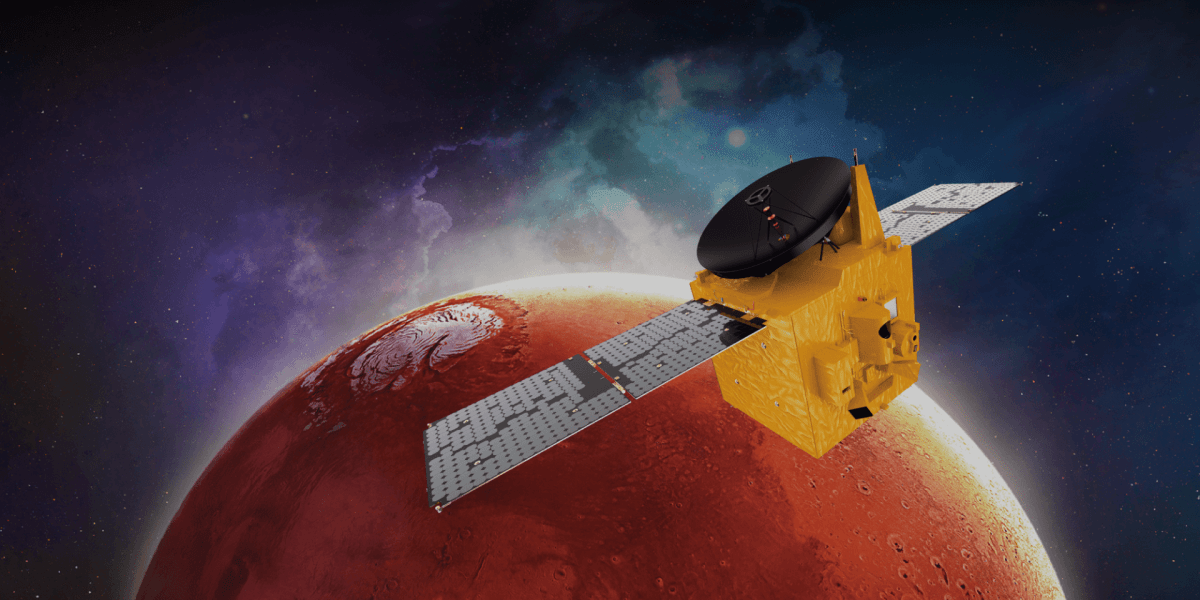The UAE’s Hope probe is about to arrive at Mars in a historic first

So on Tuesday, February 9, when the United Arab Emirates makes its first attempt to get a spacecraft into Martian orbit, it will be fighting the odds. If the Emirates Mars Mission succeeds, the UAE’s space program will become just the fifth in the world to reach the Red Planet, after the Soviet Union, NASA, the ESA, and India.
“The team has prepared as well as they could possibly prepare to reach orbit around Mars,” says Sarah Al Amiri, chair of the UAE Space Agency.
There’s some pretty exciting science in store if all things go well. But for the UAE and its partners, the Emirates Mars Mission is about much more than capping off a journey that began last summer. It’s about the future of a budding space program that wants to take on more ambitious projects down the road, and a country that wants to become a new hub of tech and science innovation for Asia. Whether the Hope mission succeeds on Tuesday or not, its impact is already being felt.
The sciences
The Emirates Mars Mission is part of a larger investigation that planetary scientists have been pursuing for decades now, hoping to discover what transformed Mars from a wet, warm, potentially habitable world into a miserably dry and cold one. A big piece of that puzzle is to figure out how Mars hemorrhaged most of its atmosphere so that its lakes and rivers evaporated over time.
The mission plans to study the atmosphere with an orbiter named Hope and its three key instruments. A camera will snap pictures of the planet using a slew of filters that restrict different wavelengths, helping scientists learn more about the water and ice content in the atmosphere or the nature of dust storms closer to the ground. An infrared spectrometer should be able to measure different elements in the lower atmosphere, like water vapor and carbon dioxide. And an ultraviolet spectrometer will monitor the top of the atmosphere, tracking how it’s still disappearing into space.
Hope will orbit Mars at a higher altitude than any previous Mars mission, allowing scientists to see half of the planet no matter where the orbiter is. Most other Mars orbiters move around the poles, so they are forced to observe locations at the same times of day with each pass overhead. Instead, Hope will orbit nearly parallel to the equator, so it will be able to watch locations at many different points throughout the day and see how things might change over time as the sun rises and sets. And its elliptical orbit will afford different ways of looking at the planet. At greater distances the spacecraft has a planet-wide view of Mars to observe global atmospheric changes over a single day, while at closer distances it can peer at specific regions to see how the atmosphere in those locations changes minute by minute, hour by hour.
“The riskiest phase”
Hope is set to rendezvous with Mars on Tuesday after a 27-minute thruster burn slows the spacecraft down by nearly 3,600 kilometers per hour, allowing it to fall into the Martian orbit safely. That thruster burn is set to occur at around 7:32 p.m. UAE time (10:32 a.m. US Eastern time). The 11-minute lag in communication caused by the distance between the two planets, however, means that the burn is effectively an automated process—ground crews won’t really be able to control what is happening. They will mainly have to hope for the best as they receive intermittent updates.
